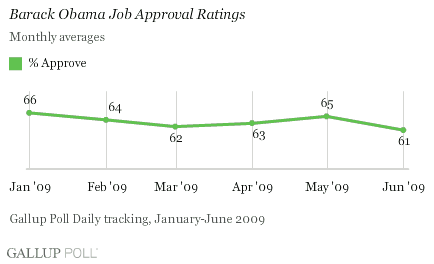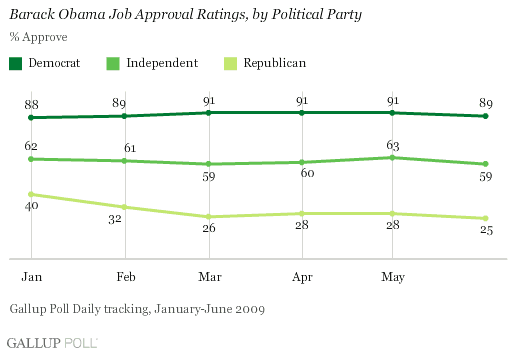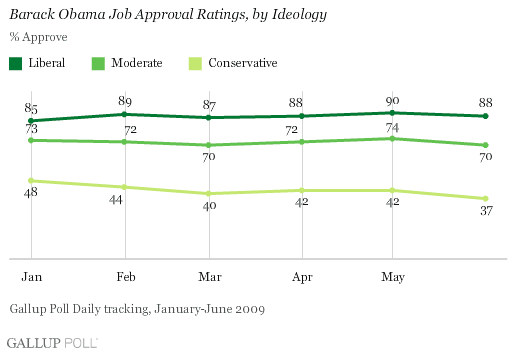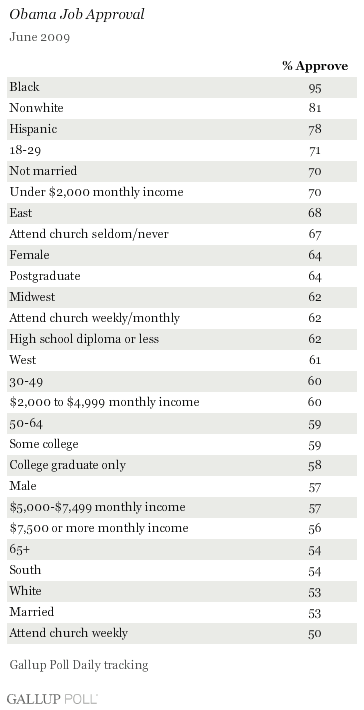PRINCETON, NJ -- U.S. President Barack Obama averaged a 61% job approval rating for the month of June, down from his 65% average in May, and one point below his previous monthly low of 62%, recorded in March.

(While Obama's approval rating has remained fairly steady, there has been significantly more change in the percentage of Americans who have no opinion of Obama, down from 19% in January to 7% in June, and those who disapprove of his job performance, up from 15% to 32%. Thus, the overall pattern has been a fairly stable positive rating of Obama's job performance, coupled with an increase in negatives occurring concomitantly with a drop in those with no opinion.)
Approval by Party and Ideology
Republicans account for most of the change in Obama's approval ratings from January through June, with their approval shifting downward from 40% in January to 25% today. Most of the change among Republicans came between January and March; Republicans' assessments of Obama have stayed fairly stable since.

Among conservatives, the January-to-June comparison shows a significant drop from 48% to 37% approval of Obama, coupled with a three-point drop among moderates and a three-point gain among liberals.

Approval by Demographic Groups
There is also a large range of approval across demographic and regional population segments.

Obama does least well among those who attend church weekly, whites, those who are married, Americans aged 65 and older, and those living in the South.
Gallup tracks President Obama's job approval daily and updates approval ratings among demographic groups each week.
Survey Methods
Monthly results are based on telephone interviews with samples of 14,000 to 16,000 national adults, aged 18 and older, per month conducted February through June, 2009, as part of Gallup Poll Daily tracking, and a sample of 5,733 national adults conducted Jan. 21-31, 2009. For results based on the total sample of national adults, one can say with 95% confidence that the maximum margin of sampling error for each month is ±1 percentage point.
Interviews are conducted with respondents on land-line telephones (for respondents with a land-line telephone) and cellular phones (for respondents who are cell-phone only).
In addition to sampling error, question wording and practical difficulties in conducting surveys can introduce error or bias into the findings of public opinion polls.
